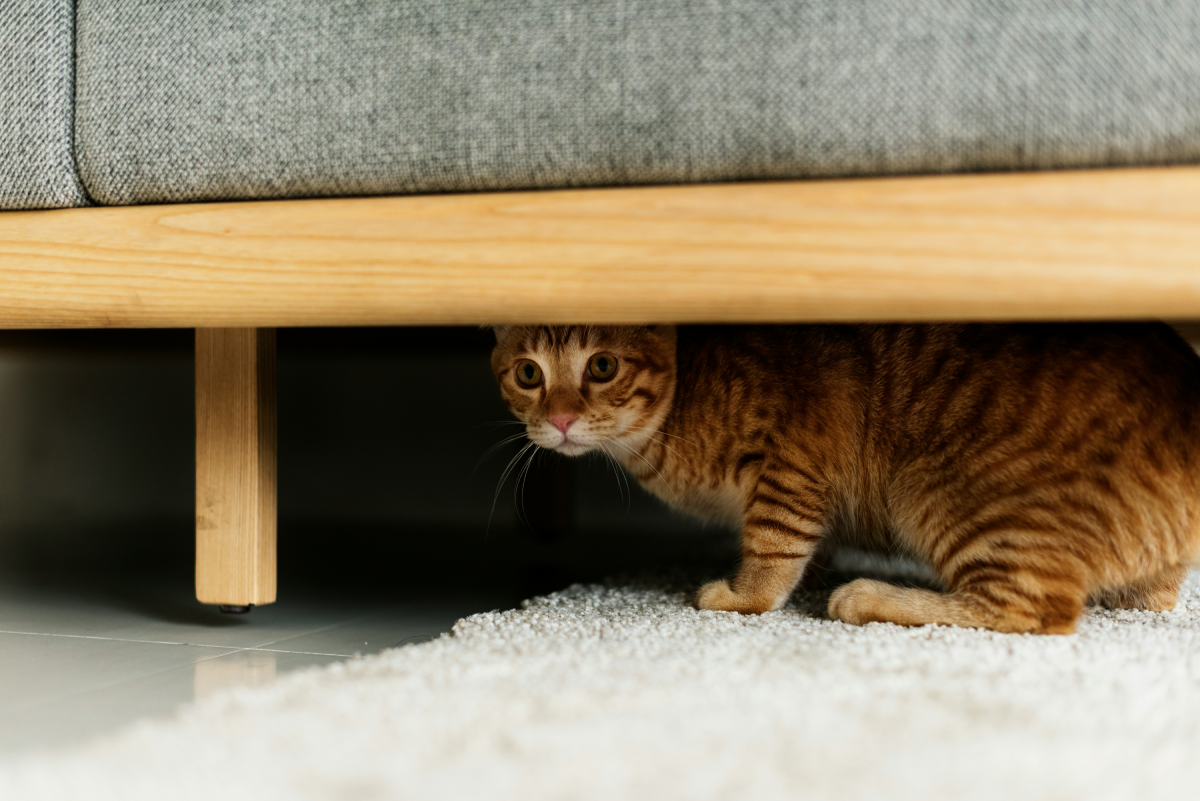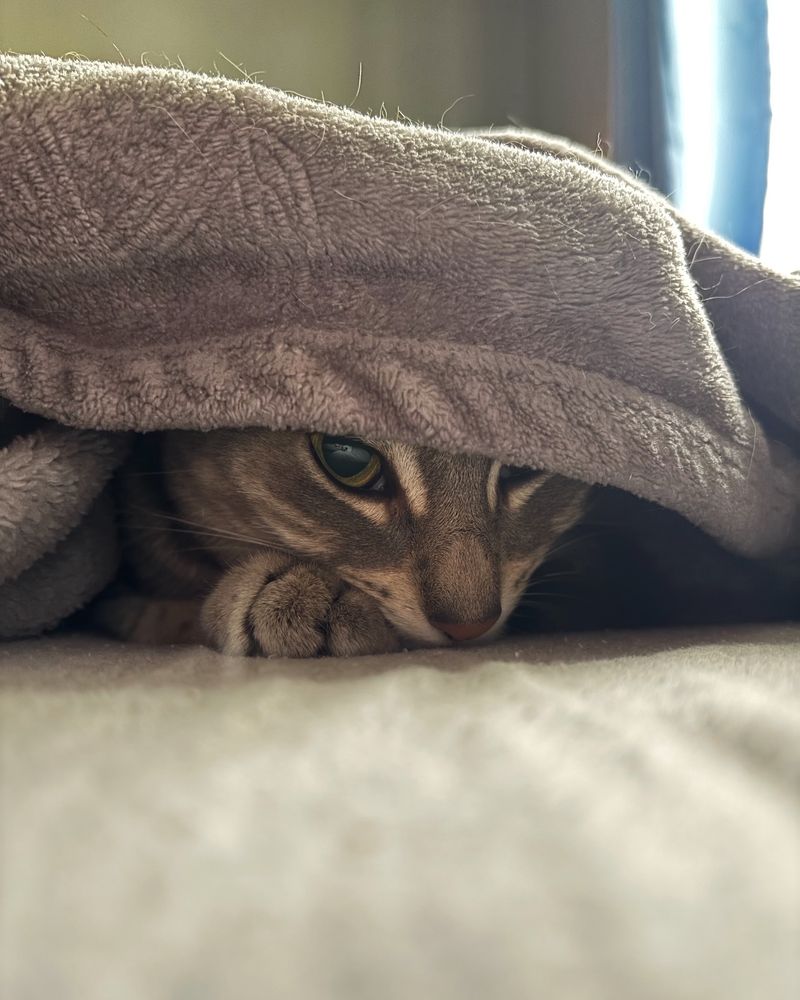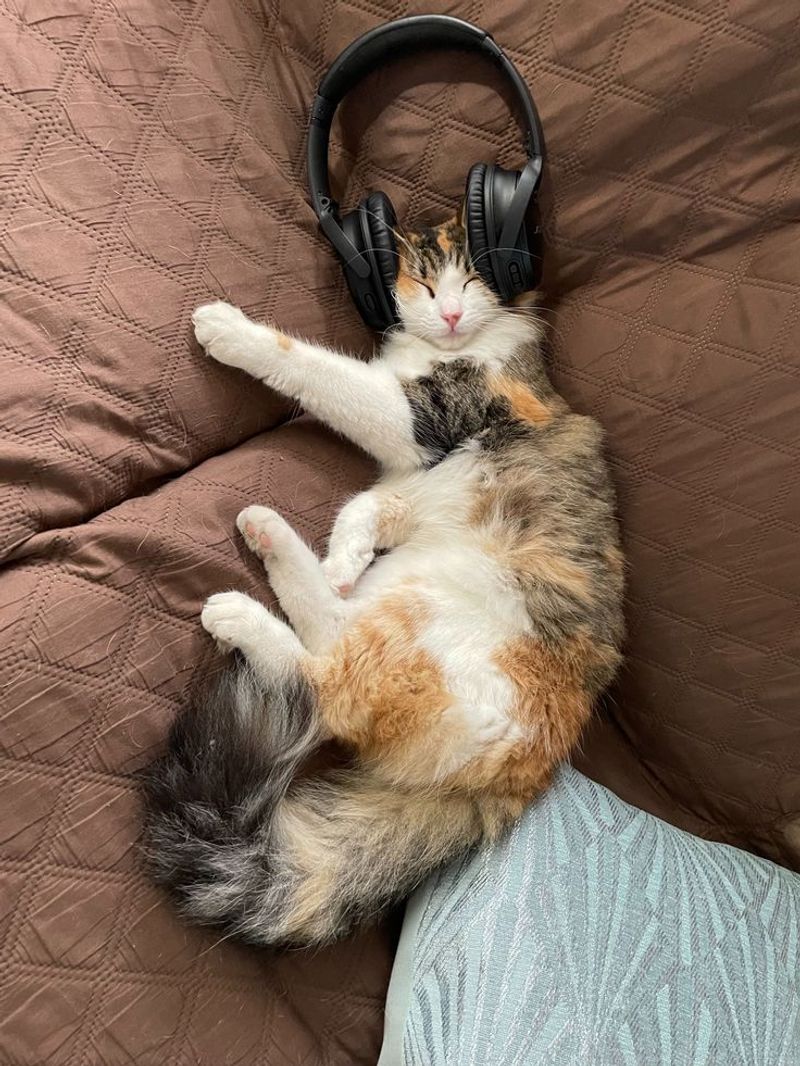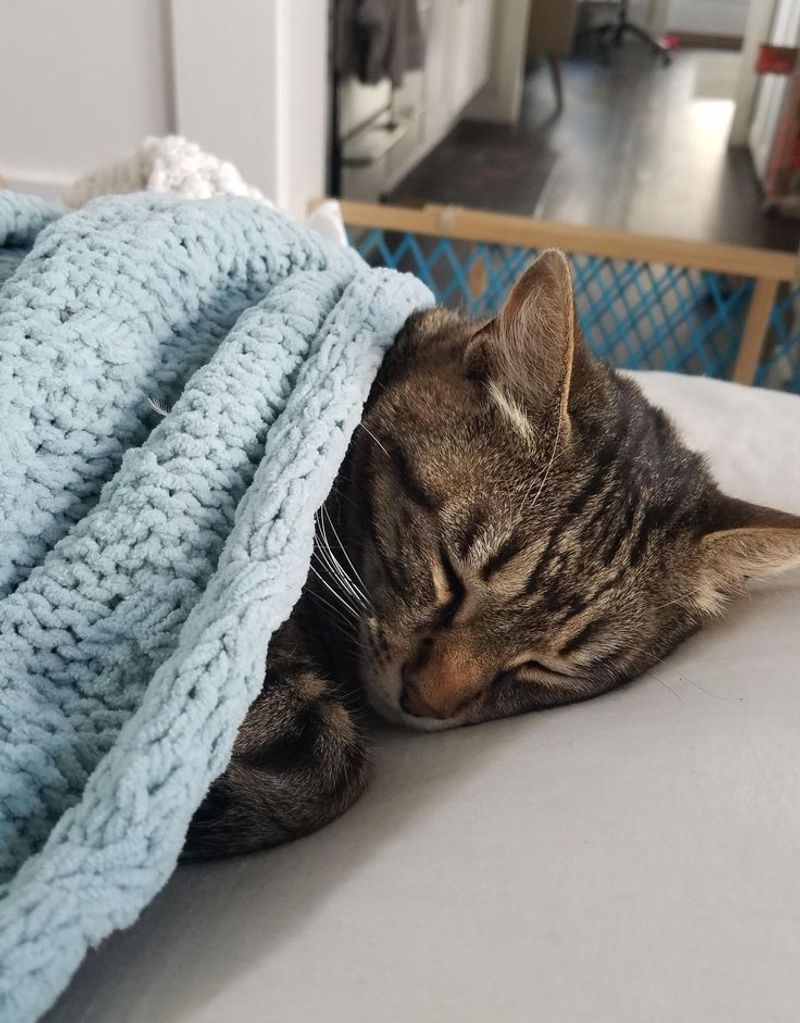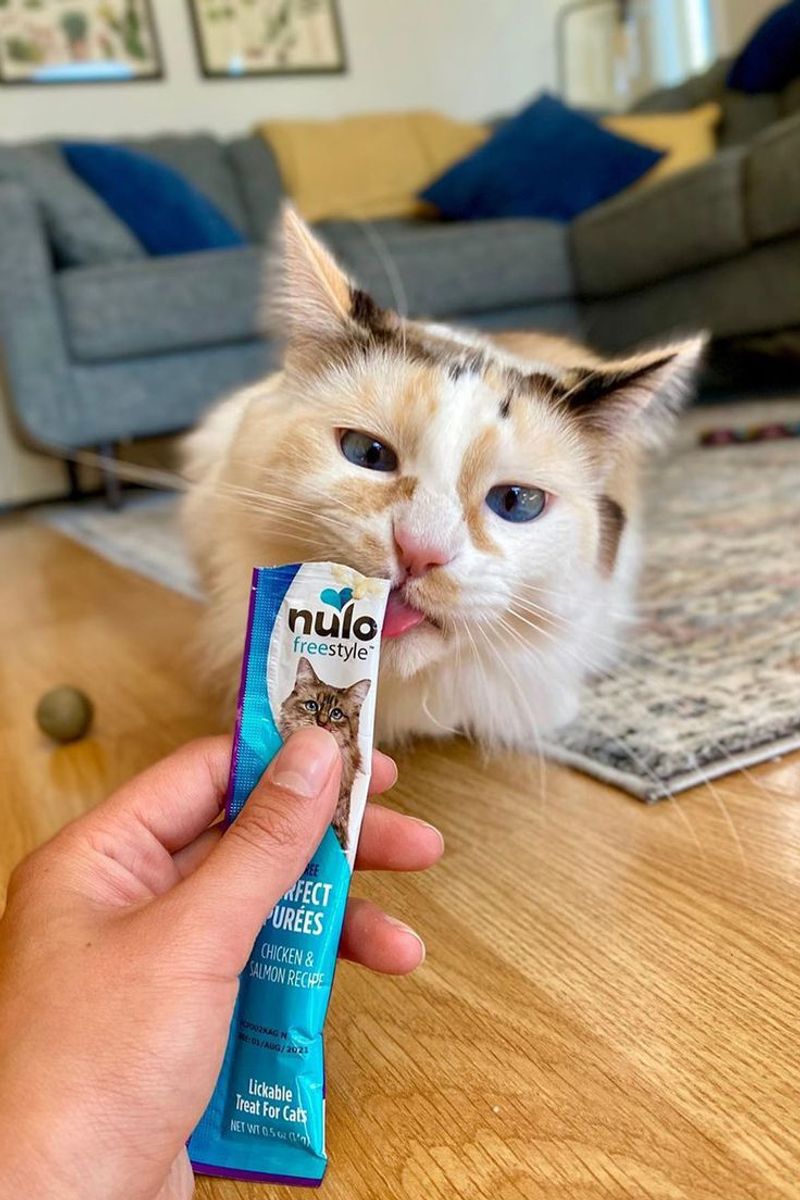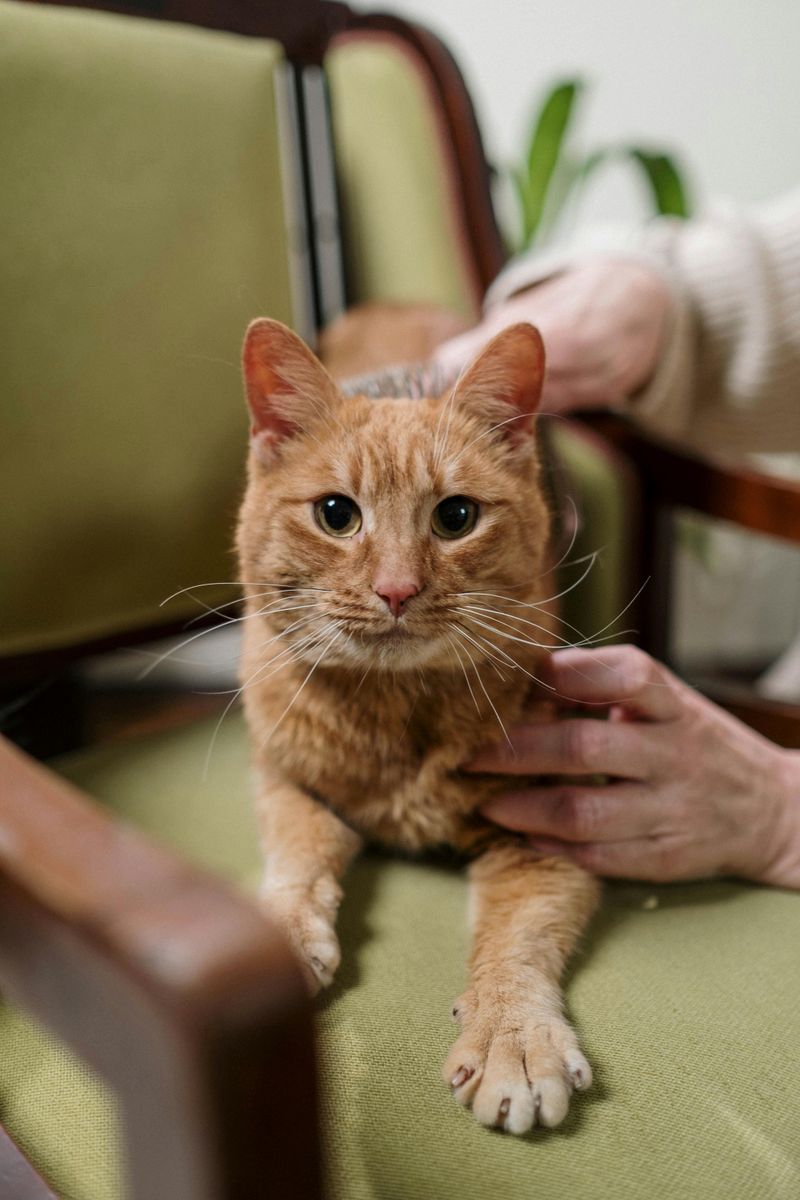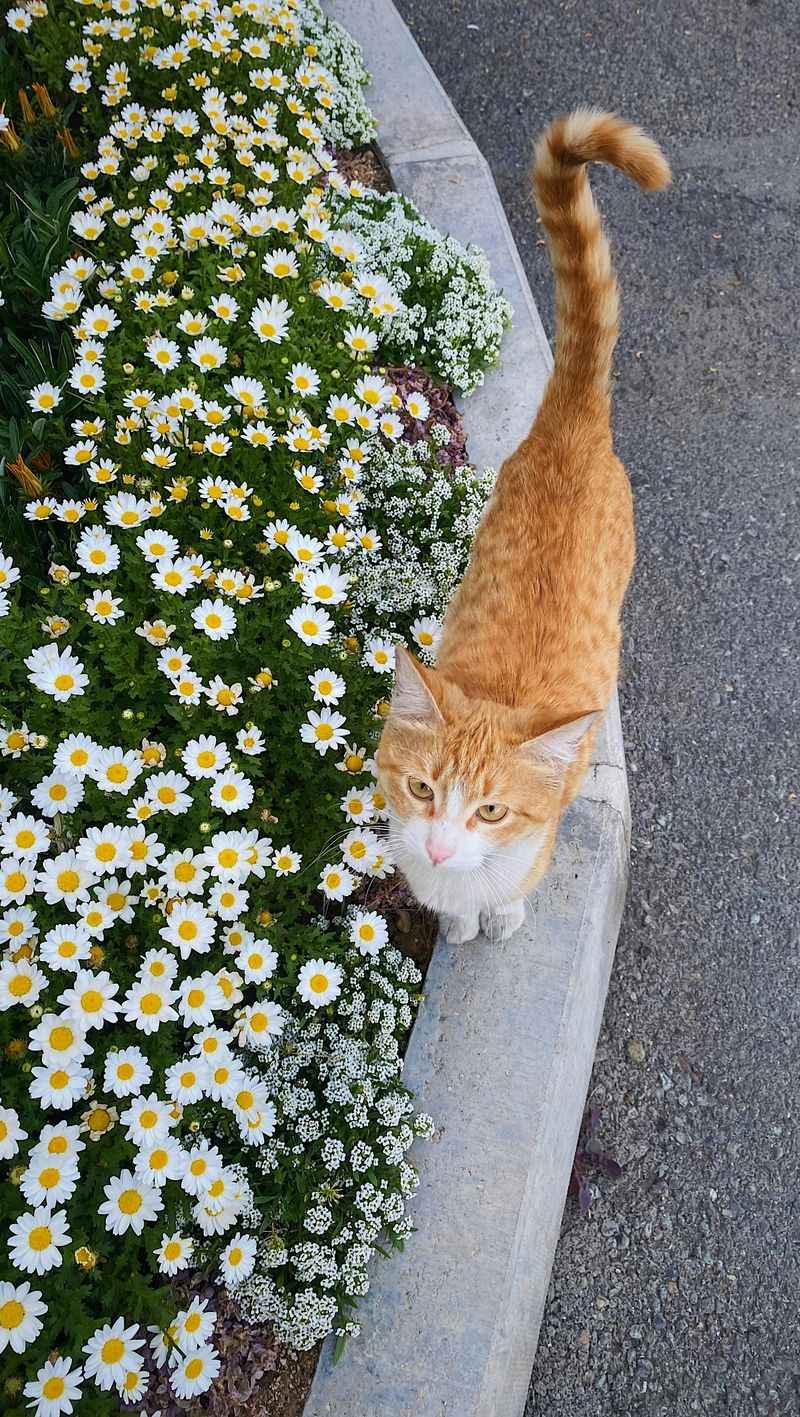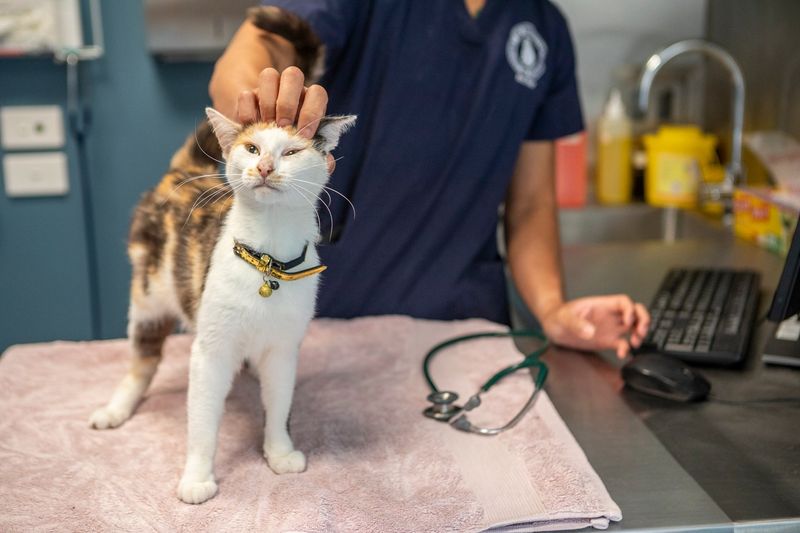📖 Table of Content:
- 1. Create a Safe Haven
- 2. Play White Noise or Calming Music
- 3. Try a Thunder Shirt or Snug Wrap
- 4. Offer Distracting Treats and Toys
- 5. Use Calming Pheromone Products
- 6. Maintain Your Cool Demeanor
- 7. Desensitize With Storm Recordings
- 8. Consider Anxiety-Reducing Supplements
- 9. Seek Professional Guidance for Severe Cases
Watching your feline friend tremble during a thunderstorm can break your heart.
Many cats experience intense fear when thunder rumbles and lightning flashes across the sky. Their acute hearing makes the booming sounds particularly frightening, often triggering panic behaviors like hiding, excessive meowing, or even destructive actions.
Let’s explore some effective strategies to help your kitty weather the storm with greater comfort and less anxiety.
1. Create a Safe Haven
Designate a cozy hideaway where your cat can retreat during storms. A closet, under-bed space, or specially designed cat cave lined with familiar blankets works wonderfully. The key is choosing a spot away from windows where thunder sounds are muffled.
Add their favorite toys and perhaps an item with your scent for extra comfort. Some cats prefer elevated spaces like cat trees or shelves, giving them a sense of control over their environment.
Never force your cat into their safe space – let them discover and choose it themselves. Just ensure it remains accessible whenever storms approach so they can seek shelter on their own terms.
2. Play White Noise or Calming Music
Sound masking can significantly reduce storm anxiety by drowning out the unpredictable booms and crashes. Classical music, specially composed cat relaxation tunes, or simple white noise machines create a consistent audio backdrop that helps normalize the environment.
Studies show that cats respond particularly well to classical compositions with tempos matching feline heart rates. Streaming services even offer playlists designed specifically for anxious pets!
Start playing these soothing sounds before the storm hits full force. Your cat will associate the gentle audio with safety rather than focusing on the alarming thunder outside, gradually building positive associations over time.
3. Try a Thunder Shirt or Snug Wrap
Gentle, consistent pressure around your cat’s torso creates a remarkable calming effect during storms. Commercial thunder shirts wrap your kitty in a secure hug that reduces anxiety through steady, gentle compression, similar to how swaddling soothes human babies.
Don’t have a specialized shirt? A snug-fitting t-shirt or even a baby sock with holes cut for legs can work in a pinch. The key is ensuring it’s tight enough to provide pressure without restricting movement or breathing.
Introduce the garment during calm weather first. Let your cat wear it for short periods with treats and praise before actually needing it during storms, creating positive associations rather than adding stress.
4. Offer Distracting Treats and Toys
Engaging your cat’s hunting instincts can override fear responses. Interactive toys that dispense treats give your feline friend something positive to focus on instead of the scary storm outside. Puzzle feeders work especially well since they require concentration and problem-solving.
Reserve special high-value treats exclusively for stormy days. Freeze-dried chicken, tuna flakes, or catnip-filled toys can become powerful positive associations with otherwise frightening weather events.
Movement-based toys like feather wands require your participation, which provides additional comfort through your presence. The combination of mental stimulation, physical activity, and tasty rewards creates a powerful distraction from thunderstorm anxiety.
5. Use Calming Pheromone Products
Synthetic feline facial pheromones mimic the natural chemicals cats release when feeling safe and content. Available as plug-in diffusers, sprays, or wipes, these products create an invisible comfort zone that significantly reduces storm anxiety without medication.
Place diffusers in rooms where your cat spends most time, especially their storm hideaway. For immediate effect, spray pheromone products on bedding or carrier blankets about 15 minutes before use, never directly on your pet.
Many veterinarians recommend starting pheromone therapy before storm season begins. This proactive approach establishes a baseline of calm that makes managing acute fear episodes during actual thunderstorms much more effective for your frightened feline.
6. Maintain Your Cool Demeanor
Cats are masters at reading human emotions. Your furry friend constantly monitors your reactions, especially during frightening situations like thunderstorms. When you remain calm and follow normal routines, you signal that there’s nothing to fear.
Avoid the temptation to excessively comfort your cat with unusual attention during storms. While counterintuitive, overly dramatic reassurance can actually reinforce their fear by confirming something is indeed wrong.
Instead, act normally while being available if they seek comfort. Reading a book, watching TV, or doing chores with your usual demeanor shows your cat that thunder is just another ordinary occurrence – nothing that warrants panic or special treatment.
7. Desensitize With Storm Recordings
Gradual exposure therapy works wonders for storm-phobic cats. Start by playing very quiet recordings of thunder when your cat is relaxed, perhaps during mealtime or play sessions. The sound should be barely audible – just enough to notice without causing fear.
Pair these gentle storm sounds with positive experiences like treats, petting, or favorite toys. Over weeks, gradually increase volume while maintaining the positive associations, never pushing to the point of triggering anxiety.
Consistency is crucial for this technique. Short daily sessions of 5-10 minutes yield better results than occasional longer exposures. With patience, many cats learn that thunderstorm sounds aren’t threatening, dramatically reducing their panic during actual weather events.
8. Consider Anxiety-Reducing Supplements
Natural supplements can take the edge off storm anxiety without sedating your cat. L-theanine, an amino acid found in green tea, promotes relaxation without drowsiness. Tryptophan supplements support serotonin production, helping regulate mood during stressful events.
Specially formulated calming treats containing ingredients like chamomile, valerian root, or CBD (where legal) offer another easy option. These work best when given 30-60 minutes before anticipated storms rather than after anxiety has peaked.
Always consult your veterinarian before starting any supplement regimen. What works for one cat may not help another, and proper dosing is essential for safety and effectiveness, especially with sensitive feline physiology.
9. Seek Professional Guidance for Severe Cases
When home remedies fall short, veterinary intervention can be life-changing for severely storm-phobic cats. Modern veterinary medicine offers numerous options beyond traditional sedatives, including targeted anti-anxiety medications that work specifically on fear responses without causing excessive drowsiness.
Veterinary behaviorists specialize in treating feline anxiety disorders through comprehensive behavior modification plans. These experts may recommend a combination of medication, environmental changes, and specific training protocols tailored to your cat’s unique needs.
Documentation helps identify effective treatments. Keep a journal noting your cat’s specific reactions to different storms and interventions, creating valuable data for your veterinary team to develop the most effective treatment plan for your terrified feline companion.
